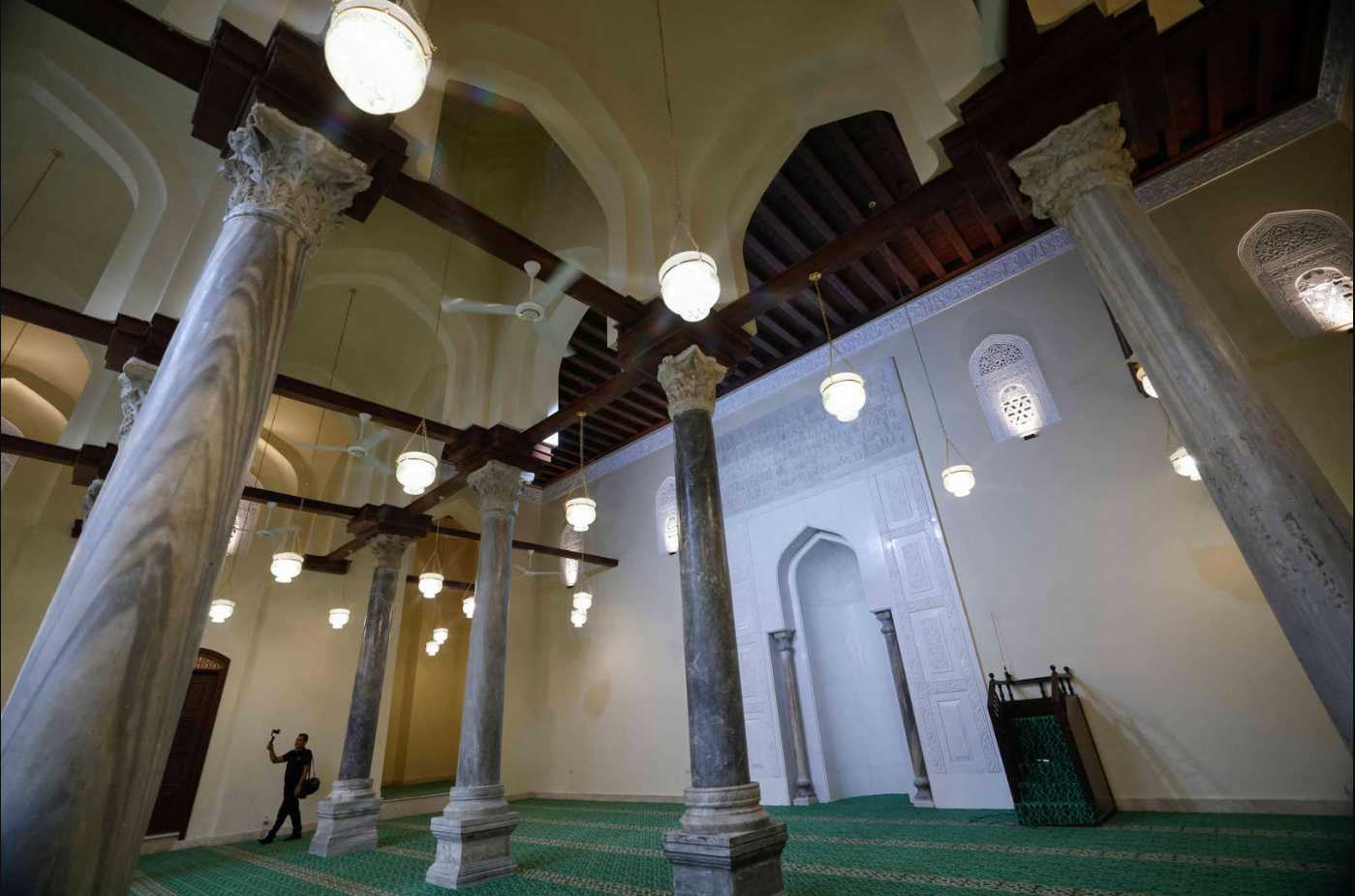900-Year-Old Islamic Monument Restored and Reopened
Al-Aqmar Mosque islamic monument mosque renovation reopening the bohras
Farah Fahim
Image via pinterest
The stunning Al-Aqmar Mosque has been restored to its former glory and is once again open to visitors after renovations were completed last week. Situated in the famous neighbourhood of Islamic Cairo, in the Bab al-Wazir area, the Al-Aqmar Mosque was built during the Fatimid era in the 12th century, between 1125 and 1126. The mosque is renowned for its architectural significance, as it represents a transition from the earlier architectural style of the Fatimid period to the emerging Ayyubid style. It is considered one of the oldest surviving stone mosques in Cairo.
The mosque’s name, “Al-Aqmar”, translates to “the moonlit”. This name is derived from the intricate and beautiful decorative motifs found on the mosque’s exterior, including carved inscriptions and geometric patterns. The facade of the mosque, one of the oldest surviving stone facades in Egypt, is adorned with Kufic inscriptions from the Quran, which are carved into the stone. The carvings include the repetition of the phrase “Muhammad and Ali”, and the facade is oriented to the direction of the street and maintains the direction of prayer, the qibla, inside the mosque.

Image via msn
Al Aqmar Mosque, located on Al-Muizz Street, was first commissioned by the Fatimid Caliph Al-Amir bi-Ahkam Allah in 519 AH/ 1125 AD. The supervision of the building, however, was overseen by the Vizier al-Ma’mun al-Bata’ihi, and then the mosque underwent renovation for the first time during the reign of Sultan Barquq in 799 AH/ 1397 AD, but this time under the supervision of Prince Yalbugha al-Salmi.
The recent renovations on the mosque lasted for ten months and had a budget of EGP 14 million. It is said to be funded by the Bohras, a religious domination under the Shia’a. The main work on the mosque included removing soot and dirt from water damage over the years. The adjustments then made were to prevent the accumulation of soot in the future. The marble walls were cleaned and restored, and their wooden parts were reinforced, along with reinforcement for the roof, to avoid collapse.

Image via egymonuments
The mosque holds the remains of Nafisa, the prophet Muhammad’s granddaughter. Al Sayeda Nafisa also has another mosque named after her that was also funded by The Bohras, along with the development of El Hussein mosque as well. However, the development of Sayeda Nafisa Mosque has been a subject of criticism due to the removal of its most Fatimid aspects and the removal of plaques engraved with the names of President Anwar Al Sadat and the last Khedive of Egypt, Abbas Helmy II. Criticism was reported by archaeologist Omneya Abdel Bar from the Victoria and Albert Museum in London. She stated that the changes are “a strange thing that has nothing to do with the style of Islamic architecture that is subject to well-known foundational principles in design.”
The mosque will be open for Friday prayers and will mark a historic moment in the lives of its nearby settlers.
recommended
 Arts & Culture
Arts & Culture
Fostering Literary Communities: Maadi Book Festival in Courtyard Maadi this May
Book Fair Books +3 Arts & Culture
Arts & Culture



